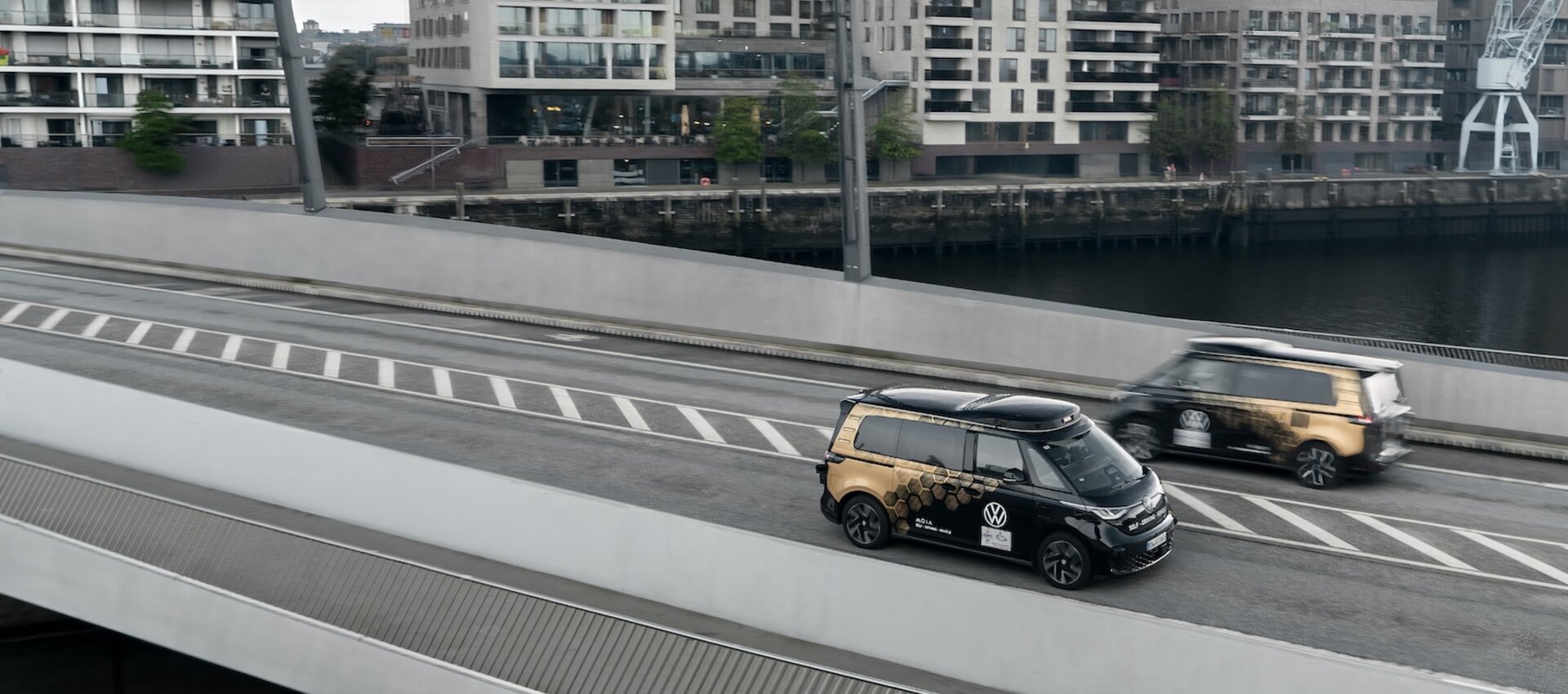The perspective for autonomous driving
Autonomous driving at Level 4 – a term that is increasingly becoming common even outside the mobility industry and raising high expectations. But what exactly does this classification entail, and what prerequisites must be met to truly achieve Level 4 in public transportation? In this blog article, we take a look at the levels of autonomous driving and explain why a holistic system approach is essential for safe and reliable operation in public transport.
-
Level 4 autonomous driving is highly complex and requires a comprehensive system that goes beyond the vehicle itself.
-
A fully integrated Level 4 system in public transportation includes not only intelligent vehicles but also vehicle operation software, as well as fleet and passenger management solutions.
-
Despite technological advances, there are currently no tests with Level 4 vehicles in Germany, underlining the regulatory and technical challenges.
-
Bringing autonomous vehicles to the streets involves approval procedures that require specific safety features, such as redundant braking and steering systems, as well as power supply.
-
MOIA, in collaboration with Volkswagen ADMT, plans to implement Level 4 ridepooling through a seamlessly integrated system to meet the future mobility needs of cities and public transportation operators.
The SAE Levels of Autonomous Driving – An Overview
In 2014, the Society of Automotive Engineers (SAE) published an internationally recognized classification for automated driving functions, ranging from Level 0 (no automation) to Level 5 (full automation). These levels describe the degree to which the system takes over driving tasks.
However, the original classification left plenty of room for interpretation, leading to inconsistent application and resulting in confusion and uncertainty. To address this, the SAE and the International Organization for Standardization (ISO) revised and clarified the classification in 2021. Among other things, the differences between Level 3 and Level 4 were further elaborated, and new terms such as "remote assistance" were introduced.
-
Level 2 – Partial Automation: The system can handle multiple driving tasks simultaneously, such as steering and accelerating. However, the driver must remain alert and ready to take over the steering wheel at any time.
-
Level 3 – Conditional Automation: The system can take over all driving tasks under certain conditions. The driver must be prepared to take control when prompted by the system.
-
Level 4 – High Automation: The system can take over all driving tasks under defined conditions. A driver is not required.
-
Level 5 – Full Automation: The system can handle all driving tasks under any conditions.
In addition, other approaches to classifying autonomous systems exist, for example based on criteria like "eyes on/off," "hands on/off," and "driver vs. no driver." These different perspectives highlight the complexity of the subject and the need for clear and unified terminology, especially on legal and regulatory levels.
Level 4: The Key Step Towards Highly Automated Driving
Level 4 of the SAE classification marks a significant leap in the development of autonomous driving. At this level, we speak of highly automated driving in predefined operational areas. Within these areas, the vehicle takes full control without requiring human personnel, such as safety drivers, on board.
But what makes Level 4 so special, especially in the context of public transportation? The German and European legal framework for autonomous vehicles requires Level 4 vehicles to be homologated. Specifically, this means that vehicles must demonstrate special capabilities, such as redundant braking, steering, and battery systems, to ensure the highest safety standards. A type approval for vehicles with autonomous driving functions is a prerequisite.
Furthermore, Level 4 is about more than just the vehicle itself. It requires a holistic system that includes automated procedures for boarding and alighting, remote monitoring by a technical supervisor, and handling special and exceptional situations. In other words, a complete system is needed, consisting of an intelligent vehicle, vehicle operation software, and digital solutions for fleet and passenger management. This system not only drives autonomously but also picks up passengers independently, safely takes them to their destination, and even manages unexpected situations like emergency responses.
In addition to vehicle type approval, operating within public transportation requires approval for the operational area under the German Autonomous Vehicle Approval and Operation Ordinance (AFGBV) in cooperation with local authorities – and for highways, with the Autobahn GmbH. This ensures that highly automated vehicles can be safely operated in designated areas by assessing the suitability of local road infrastructure and the safety of all road users. Lastly, if passengers are to be transported, a license under the German Passenger Transportation Act is also required. These complex approval structures demonstrate the safety-focused approach in Germany and Europe.
Although many projects in Germany are considered pioneers in autonomous driving, they often focus on vehicles with driver assistance systems that still require continuous monitoring by human drivers. A true Level 4 system, however, requires all the previously described components, not just an intelligent vehicle. So far, no Level 4-capable vehicle has been tested in Germany. Only through this complete system, which must be tested in fleets of hundreds to thousands of vehicles, can truly scalable solutions for establishing the technology in public transportation emerge.
MOIA and Level 4: A Complete System for Public Transportation
MOIA aims to integrate Level 4 technologies in ridepooling into public transport. We are focusing on the series production of the ID. Buzz AD. Our focus is on a complete system that encompasses all aspects of the vehicle, operation software, mobility platforms, and interfaces for MaaS (Mobility-as-a-Service) apps. This allows for seamless integration into existing public transportation systems and offers an innovative solution for the mobility needs of the future.
